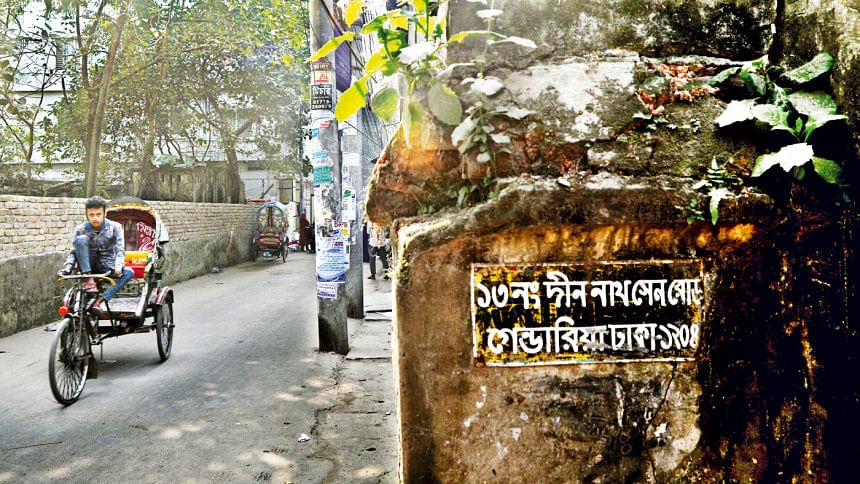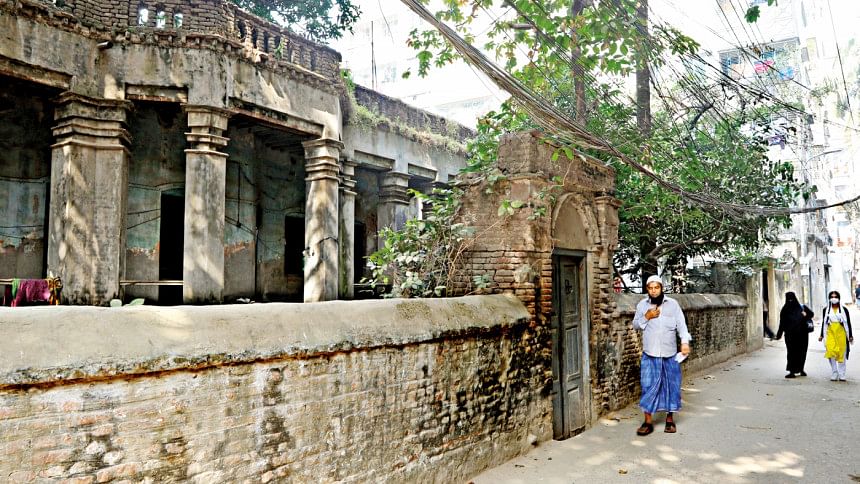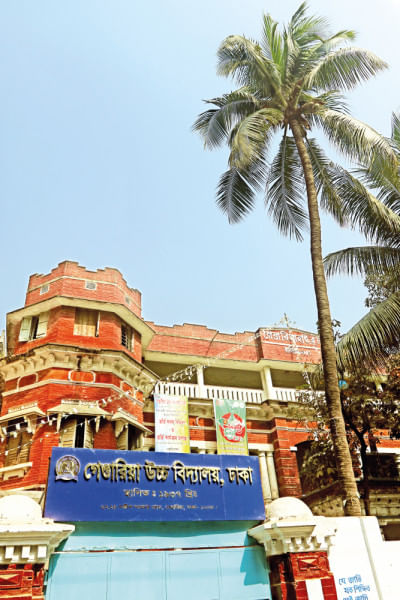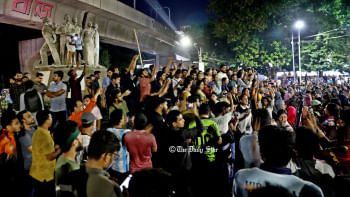Gandaria: Grand area no more!

This is how the saying goes -- back in the days, a British traveler arrived in the area and was so blown away by all he saw, he exclaimed, "What a grand area!"
Although no one knows the validity of this story, residents of Gandaria love to call it "grand area" based on that tale.
But these days, the area has very little to justify that claim. Once a planned residential area -- full of greenery, ponds, playgrounds, courtyards in front of every house -- it was the ideal place for a middle-class family, as only a handful of people lived here.

But with the passing of time, Gandaria has become bereft of its former glory. A trip around the area doesn't show any ponds, playgrounds or even any open spaces anymore. The houses that previously had courthouses are now modern multi-storey apartments. The once quiet neighbourhood has become plagued with honks and cries of vehicles, its streets full of traffic congestion throughout the day.
ORIGINS OF GANDARIA
Although there's no proof of the "Grand Area" theory, what can be known from history is that the area was once surrounded by a dense forest.
A lot of "gandari", or sugarcane, was farmed here back in those days. It is assumed that the area got its name from this crop. Before this, it was known as Dolaiganj.
In his book "Smriti Bismritir Dhaka", historian Muntasir Mamun noted that Gandaria was a jungle even at the start of the 19th century. In the second half of the century, Shri Vijay Krishna Goswami built an ashram here for meditation. Even at the start of the next century, a part of Gandaria was known as Bagha Bari, possibly because tigers inhabited the area once upon a time.
Muntassir Mamoon also corroborates the theory that Gandaria's name comes from "gandari" or sugarcane farming.
On the east side of Gandaria stands the rail station. Trains leaving from Kamalapur make a stop here before moving towards Narayanganj. On the northside of the station lies Kadamarsul Mosque, which is said to host a stone with the prophet Muhammad's (PBUH) footprint etched on it.
There used to be two bridges that helped connect Gandaria's westside to the rest of the city. One was known as "Loharpool", made with bricks and stones. The other one was built with wood, and was fittingly known as "Katherpool". But none of these exist anymore.

In 1926, Gandaria played host to the then India's first women-only organisation, "Gandaria Mahila Samity". Revolutionary Ashalata Sen was its president, whose son Samar Sen was India's permanent ambassador at the United Nations during the Liberation War.
Kishaloy Kochi Kachar Mela played an important role in shaping the psyche of Gandaria's young ones during those times. There's a saying about the organisation, which is a part of Central Kochi Kachar Mela: there isn't a family in Gandaria which doesn't have a member in Kishaloy.
Another famed organisation of the area is Anzuman Mufidul Islam, formed in the aftermath of the Kolkata riots, to help with the burial rites of unidentified Muslim bodies. After the partition, one of its branches was opened in Gandaria.

GANDARIA TODAY
Over the years, almost all of its legacies have been wiped out. Standing at the Distillery Road, Adhunik Asgar Ali Hospital is the only hospital in the area. However, most residents of Gandaria don't have the income to afford treatment at the hospital.
The Dhupkhola roundabout stands right after Distillery Road. Now known as the 13 No. Bus Stand, it has remained closed for almost seven years.
The area has only one bus service, "Malancha Transport", going from Gulistan to Mohammadpur, which is under immense stress to cater to everyone. This leads the locals to rely on rickshaws.
But as the roads in Gandaria are rather narrow, the presence of so many rickshaws cause near-endless traffic congestions, especially on the street that runs from Dhupkhola roundabout to Gandaria High School.
At the heart of this street lies the legendary ayurvedic medicine maker Sadhana Aushadhalaya. But with the advent of modern medicine, the apothecary has slowly fallen out of favour.
The Dhupkhola playground used to be a matter of pride for locals back in time. Also known as Eastend Club Field, people of the area grew up running around in the oo. But after the construction of a flyover, the field has been reduced to rubble.
For a long time, construction materials of the flyover were left here. Right when it was almost ready again, DSCC started building a Shishu Park there, which has once again made it inaccessible.
The area used to host four to five ponds, all of which have been lost to time, with the arrival of too many people.
Visiting the area, it was seen that other than the near centenary Gandaria High School and Maniza Rahman School and College, there aren't any other quality educational institutes in Gandaria. Besides, there are questions about the quality of education in these two schools too. This is why many children of the area are sent to Lakshmi Bazaar's St Gregory's and St Francis schools, which are quite far away from Gandaria.
WHAT LOCALS SAY
Famed educationist Hayat Mahmud lived here for six decades before leaving for Jigatola in July last year. He told this newspaper, "I came to Gandaria in 1962. It used to be different from other parts of the city. Reading was in vogue. A lot of eminent figures used to live here. But the area has lost its lustre over time. A lot of issues, starting from busy streets to environmental problems, have been created as a result."
Manzar Chowdhury Sweet has been living in this area for 43 long years. "This place used to be a cultural hub. Many influential figures used to live here, under whose shadows we grew up. As these veterans left, the area started suffering from a crisis in taste. Over time, the area hae become nothing more than a cluster of concrete," he said.
This correspondent found long-time resident Ajmat Ali in front of Gandaria's legendary Shona Mia Mistanna Bhandar. "This is not the same Gandaria anymore. It used to be open, spacious. Now it has so many apartments that one cannot even see the sky," he said.

 For all latest news, follow The Daily Star's Google News channel.
For all latest news, follow The Daily Star's Google News channel. 



Comments